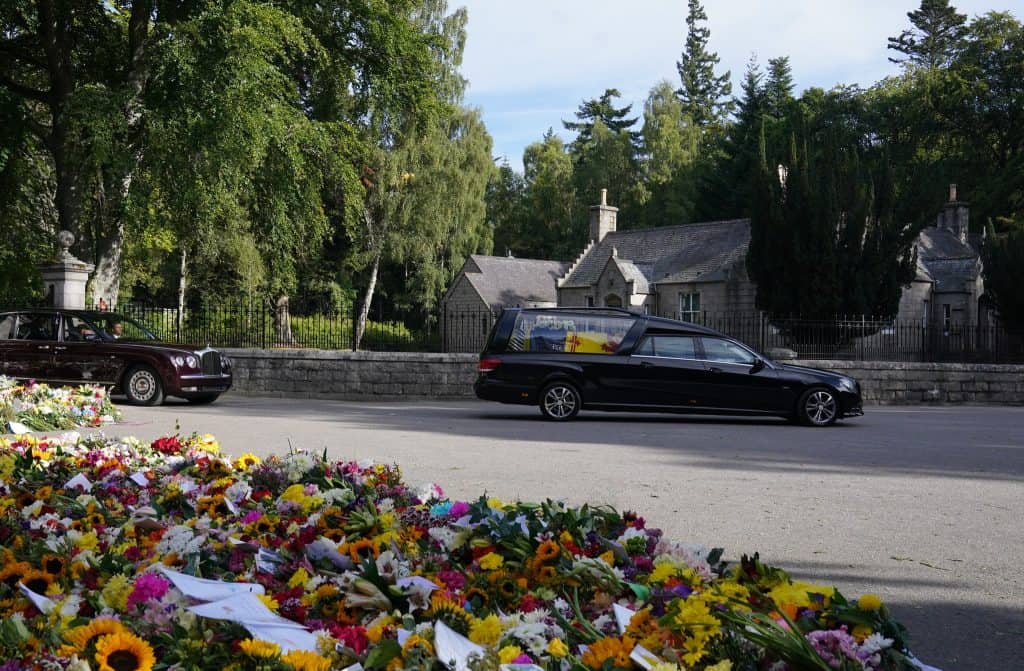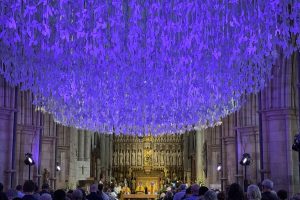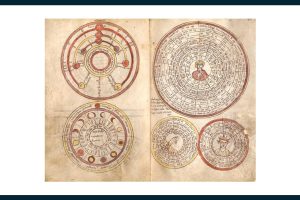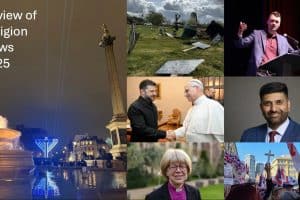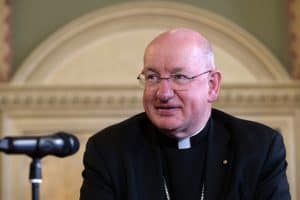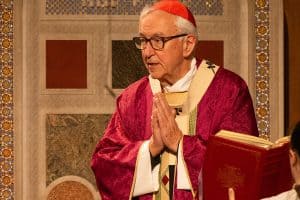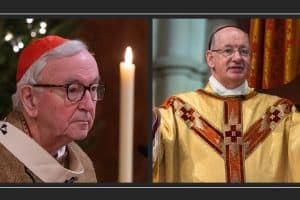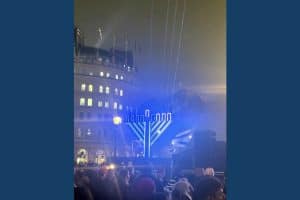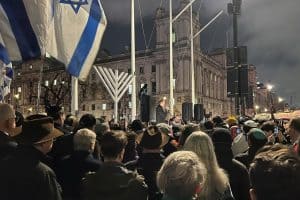Distinctive rituals in all faiths to mourn the sovereign
Places of worship moved centre stage in communities up and down the land this weekend, as people came to terms with the death of Queen Elizabeth II. The Church of England issued guidance to churches covering the ringing of bells, places for flowers, provision for books of condolence, putting on special services and the flying of flags. Special orders of service were observed at church services yesterday in England and in the Church of Scotland. A Jewish prayer for the Queen was read at many synagogues on Saturday, saying the Queen “sought comfort from her faith and led by example, speaking truth, abiding by her oath of majesty, accepting the discipline of her sovereignty and serving God with humility and intent”. Hindus in Cardiff held a candle-lit vigil at Shri Swaminarayan Mandir in Grangetown, with hundreds of people joining in and singing. In Bristol, the chair of the Council of Bristol Mosques said the Queen meant a great deal to the community and the congregation at prayer felt her loss.
Archbishop pays tribute to Queen’s example of Christian life and death
The Archbishop of Canterbury Justin Welby praised the Queen in a sermon at Canterbury Cathedral, following the tradition that bishops preach in their diocesan home church following the death of a sovereign. He said the Queen was the “most wonderful example of Christian life and Christian death.. Her late Majesty taught us much, if not more, about God and grace, both in words and in the actions that reinforce them, than any other contemporary figure. We remember her not for what she had but what she gave. What a precious person … and how keenly we feel her loss.”
The King on a visit to Cambridge: “There’s a lot of sense in the Quran”
Abdal Hakim Murad, otherwise known as Dr Tim Winter, a theologian and Islamic scholar at the University of Cambridge, revealed that King Charles had learned Arabic to understand the Quran. In a film posted on social media by Cambridge Central Mosque, he said: “He has gone out of his way to make positive remarks about Islam. Everybody knows this. He likes Islamic gardens, art and textiles. When he came to Cambridge years ago – not on an official visit – he wanted to talk about the Quran. ‘There’s a lot of sense in the Quran’, I heard him say. God has taken him on this particular journey that overcomes this stupid binary east and west, Muslim and non-Muslim, immigrant and all of that. He wants to overcome it and that deserves some credit”.
For more messages and stories on Faith woven into the start of King Charles II’s reign, read our collation of quotes here >>
‘A very English, very Anglican form of religious belief‘
The depth of the Queen’s faith was clearly apparent to reporters who documented her life. Stephen Bates, formerly royal and religion correspondent at The Guardian, said her faith was deep, intense and quite private. “It was a very English, very Anglican form of religious belief with the Church of England very central to her life”. He was speaking in the latest Religion Media Centre podcast, which gave more insight into her personal faith and reflected the impact of her death on all communities. Author and journalist Catherine Pepinster suggested that the Queen’s humility was rooted in her idea of serving a higher power which kept her grounded. Two faith leaders explained that they would never forget the powerful effect of meeting the Queen. Rabbi Nicky Liss said there was something tangible about her greatness and Imam Qari Asim MBE said she had a remarkable capacity to listen and inspire. Listen to the podcast here.
School materials for children experiencing grief at Queen’s death
Special resources have been made available by the Church of England for school children to work through their sense of grief at the Queen’s death. PowerPoints prepared for primary and secondary pupils focus on the idea of a servant monarch and hold up her life as an example of a life based on faith. They acknowledge and assume young people will be experiencing grief and introduce ideas about the meaning of life and solace for the bereaved.
The churches included in the Queen’s final journey
A service of remembrance was held at St Paul’s Cathedral on Friday evening. The Prime Minister read the lesson and MPs attended, but most of the 2,000 congregation were members of the public who queued to get in. Charles’ address to the nation was played, where he said the Queen had a life well lived and a promise with destiny kept. “That promise of lifelong service I renew to you all today”, he said.
In Balmoral, where the Queen passed away on Thursday afternoon, her local church, Crathie Kirk, held a private service on Saturday for members of the royal family. It is believed that there has been a church on or near the site since the 13th century, though the current building dates from the late 19th century and it is the chosen place of worship for the royal family. The minister, the Rev Ken MacKenzie, was part of the funeral cortege travelling to the Palace of Holyrood house in Edinburgh.
St Giles’ Cathedral, Edinburgh, is the “high kirk” of the Church of Scotland, hosting service of national importance such as thanksgiving of the Union in 1707 and more recently, for reconciliation following the referendum. Dating from the 14th century, with many additions, the cathedral is one of Scotland’s most notable medieval buildings. The Queen’s body will lie in state here for 24 hours until the journey to London, where the coffin will lie in Buckingham Palace, then be moved to Westminster Hall in the Houses of Parliament for four days so that the public can pay their respects.
Westminster Abbey is the location for the funeral on Monday 19 September, the place where the Queen was married and swore her coronation oath. All monarchs since 1066 have been crowned here and 17 are buried below. But there have been fewer funerals of monarchs – this will be the first since George II in 1760.The service will be led by the Dean, the Very Rev David Hoyle. The Abbey has public squares nearby which makes it easier for the public to assemble and this is thought to have contributed to the decision to hold the service there.
The Queen’s final resting place is St George’s Chapel, Windsor, where a committal ceremony will take place later on Monday, following the funeral at Westminster Abbey. She will be laid to rest in the King George VI memorial chapel, next to her husband of 73 years, the Duke of Edinburgh, who died last year. The chapel also houses the remains of the Queen’s father George VI, her mother the Queen Mother and sister Princess Margaret.

